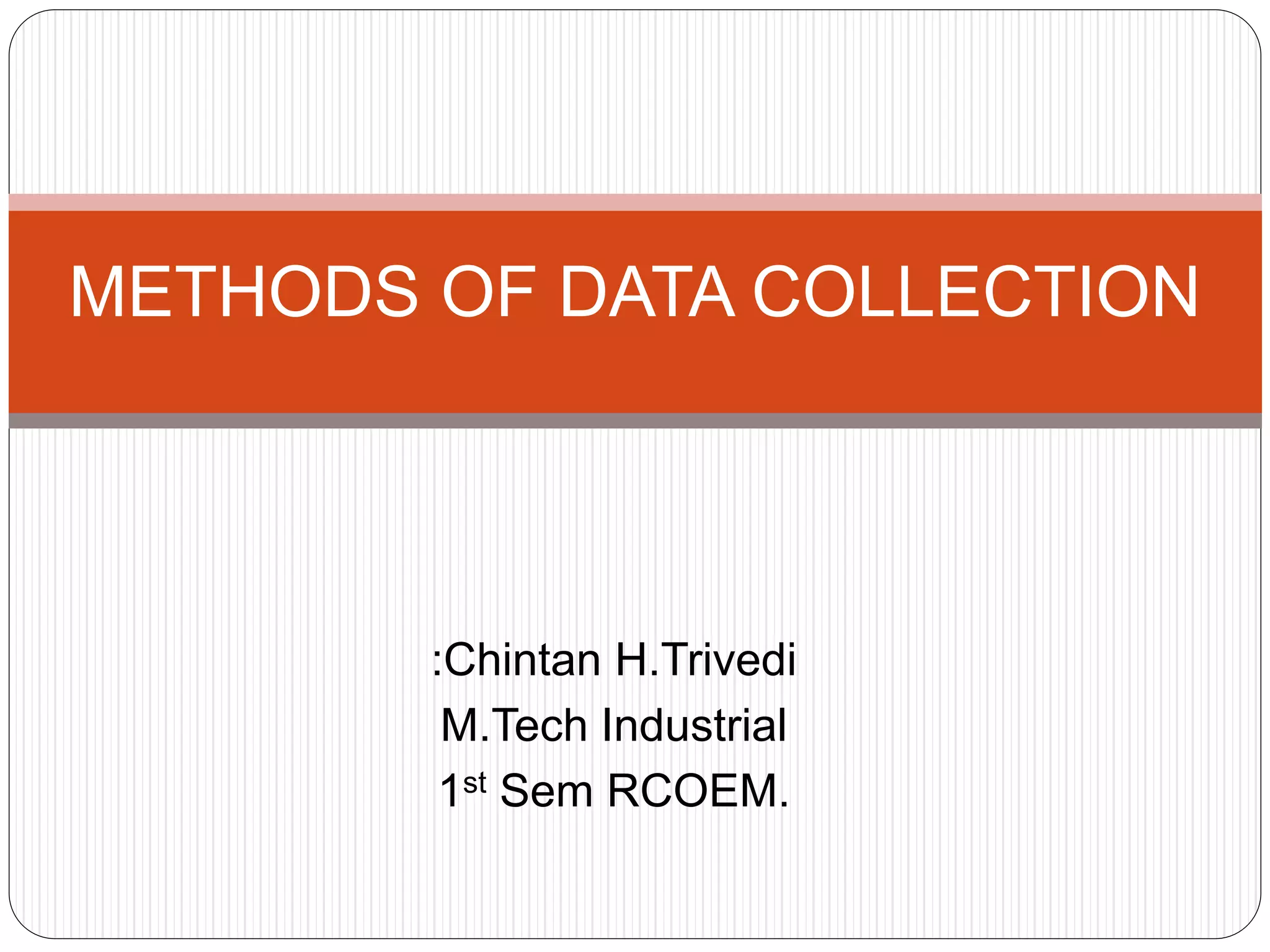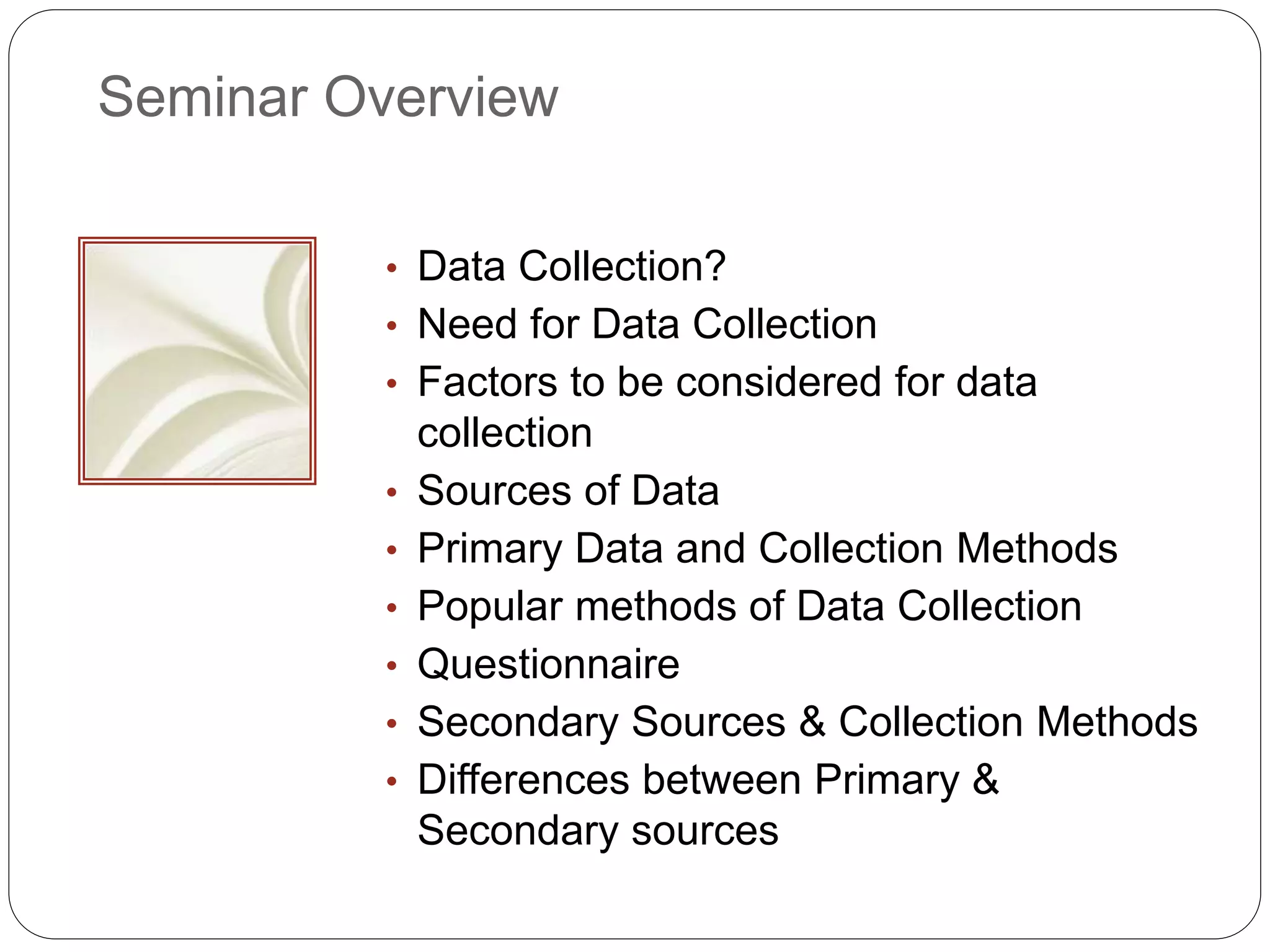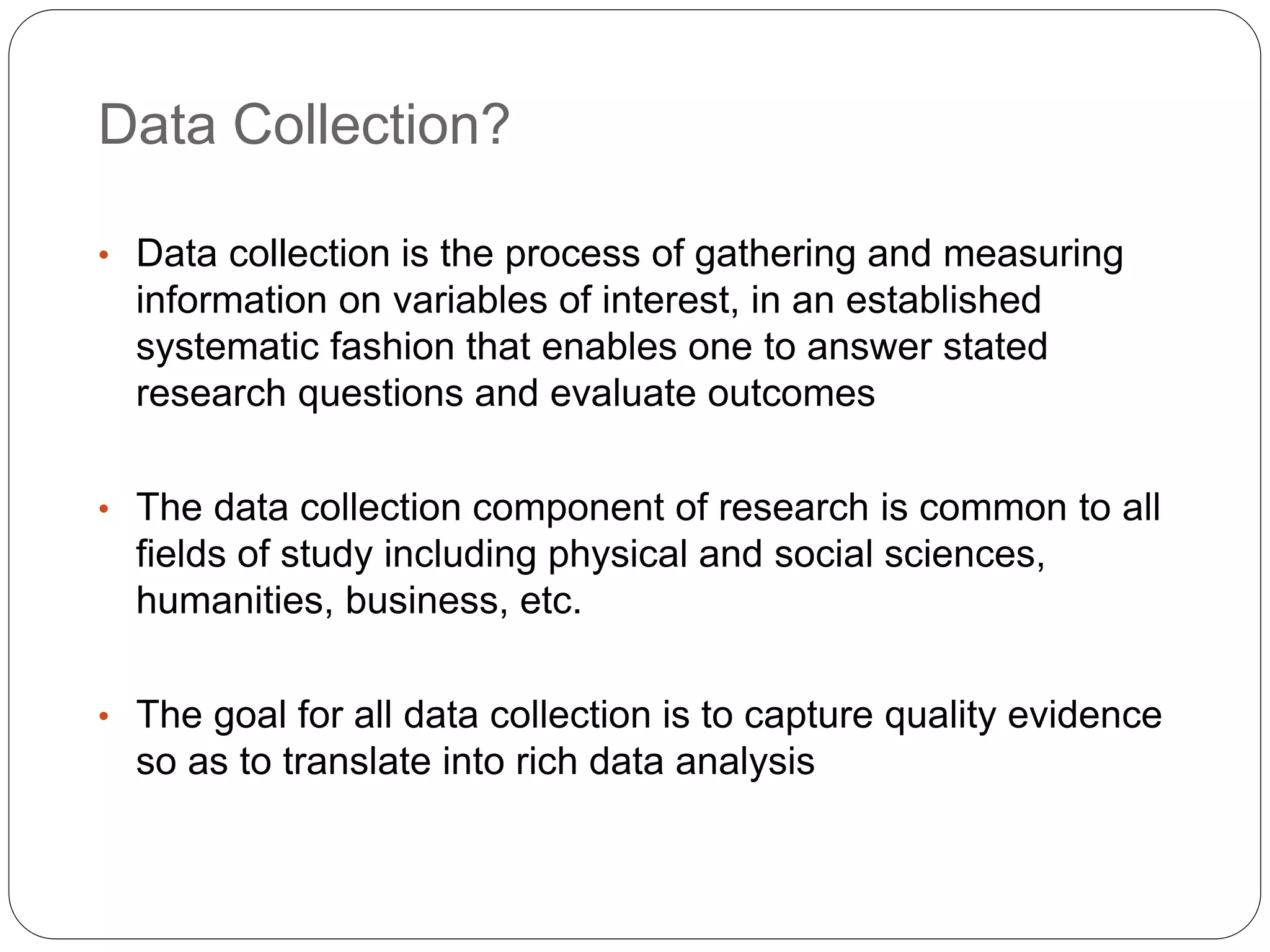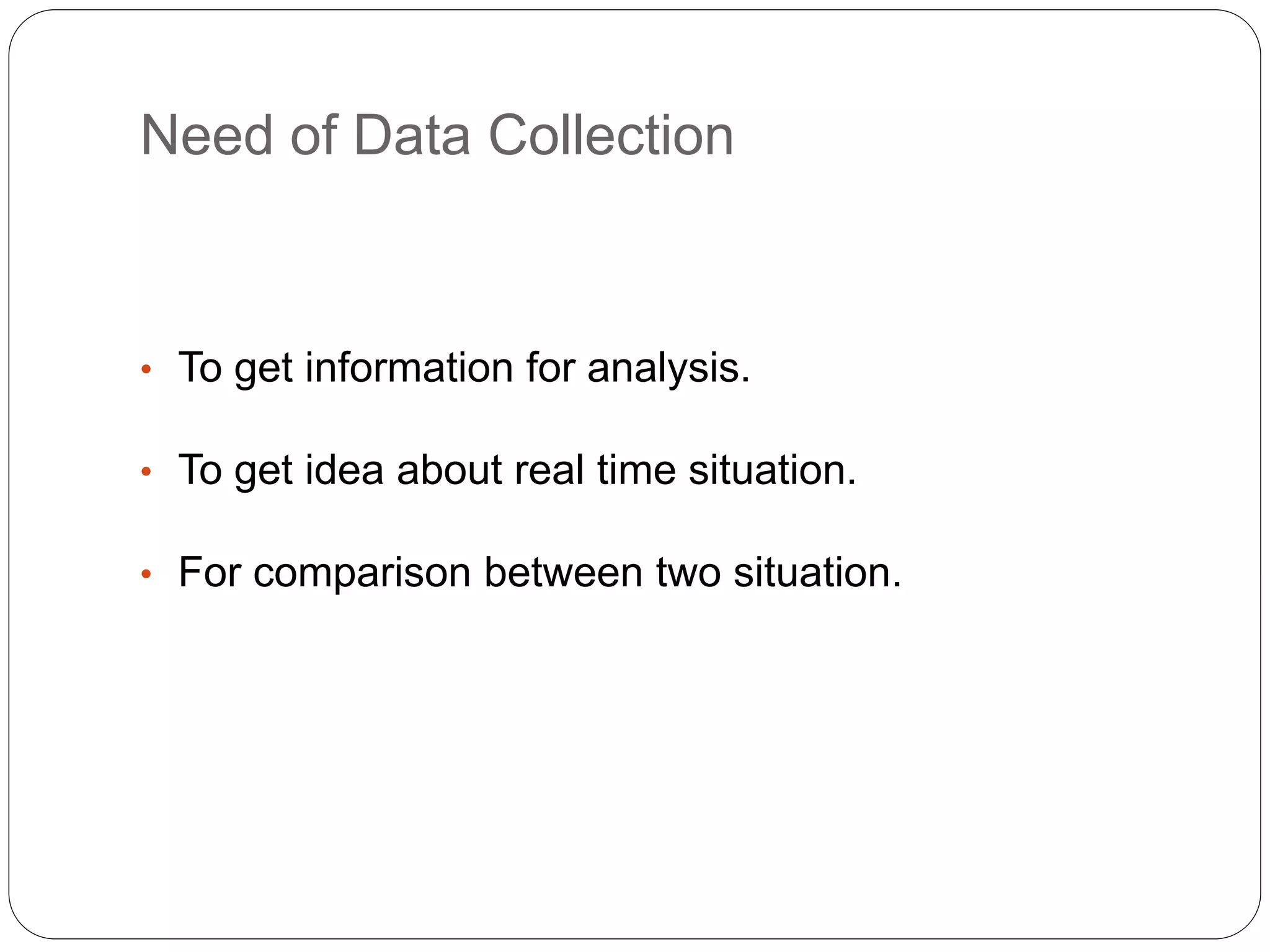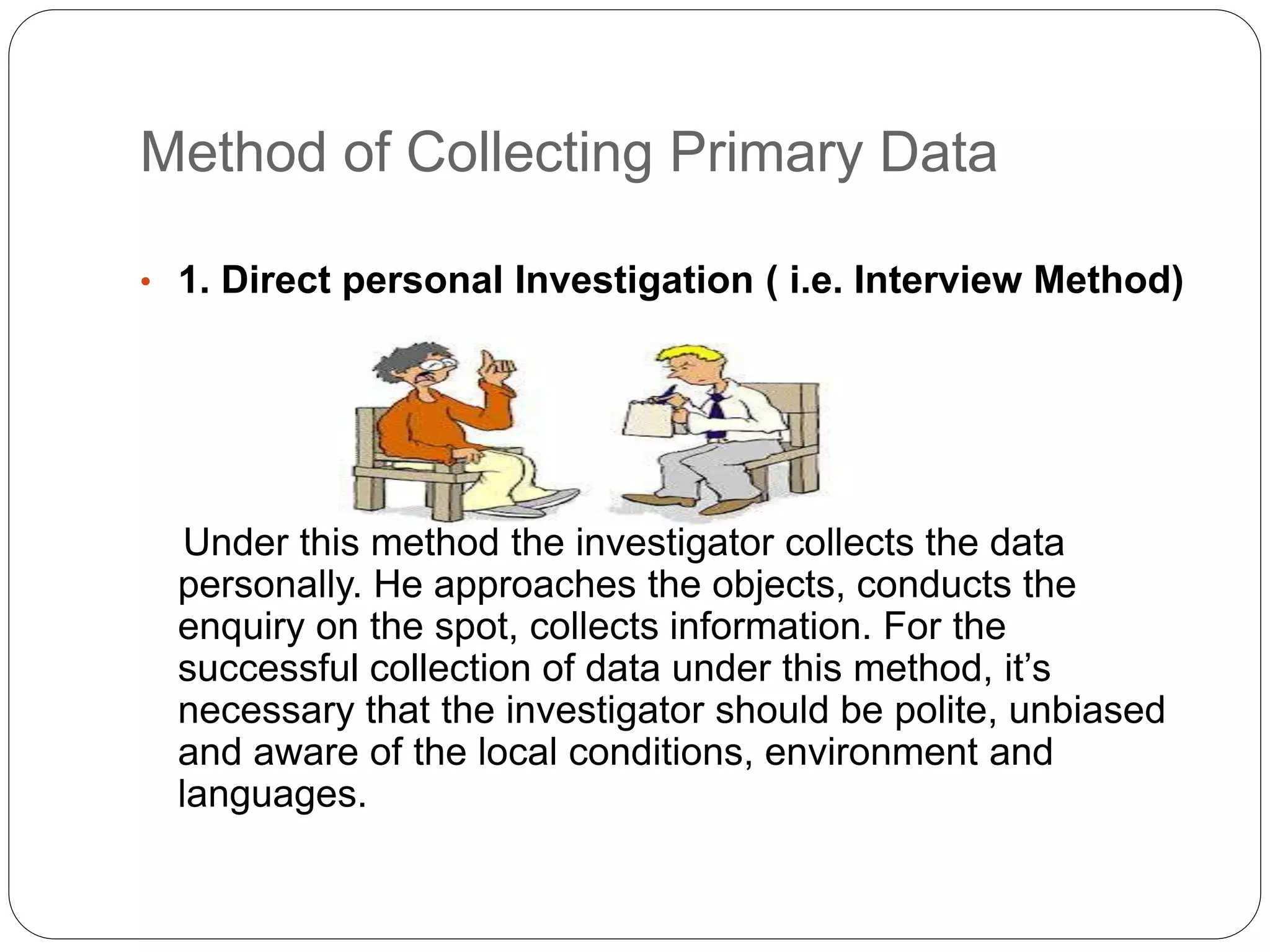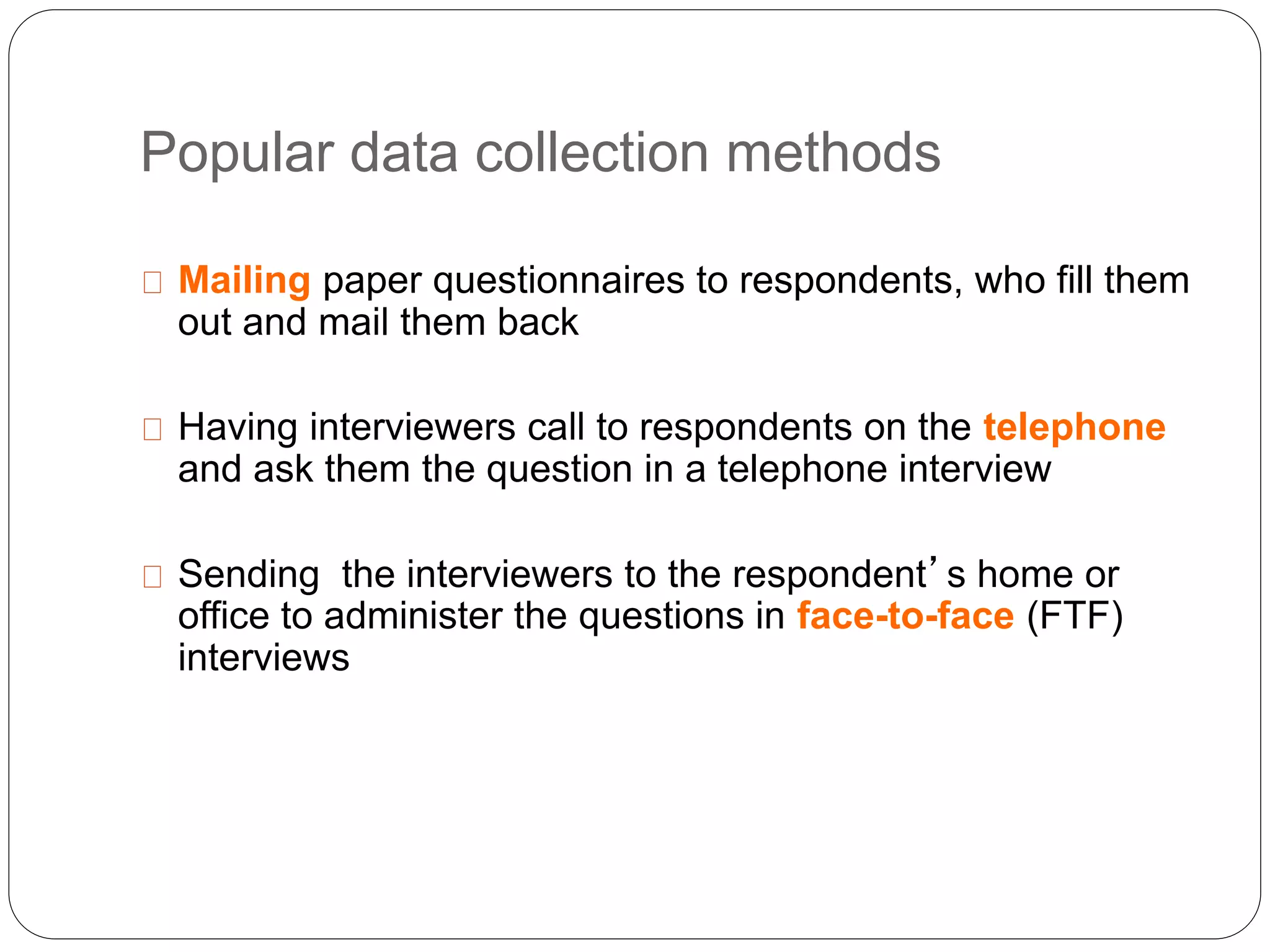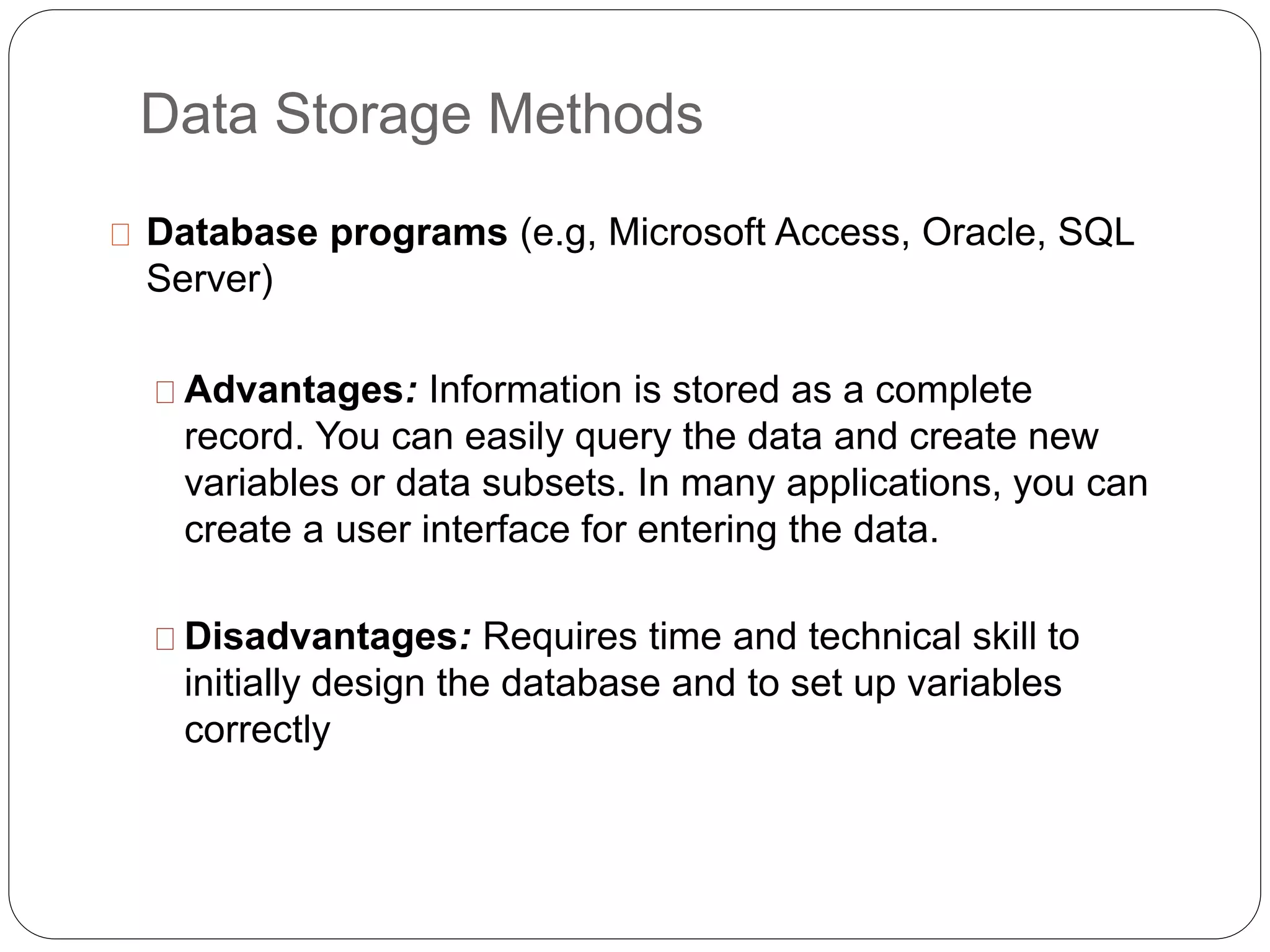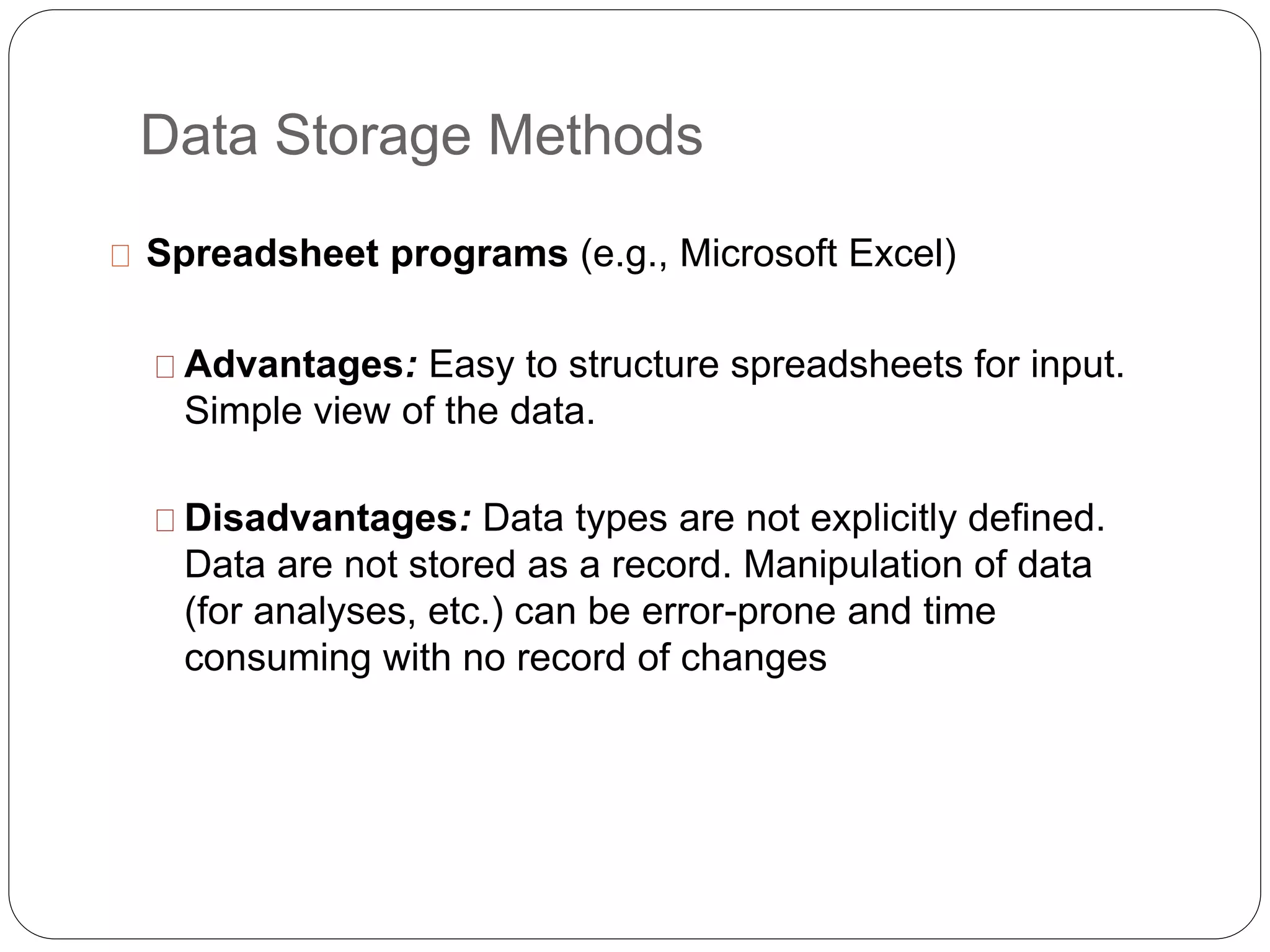This document discusses various methods of data collection. It describes primary data collection methods like personal interviews, questionnaires, and observation. It also discusses secondary data collection from published sources like government publications and commercial research, as well as unpublished sources. The key differences between primary and secondary data are described, such as primary data being real-time while secondary data is from the past. Popular data storage methods include databases, spreadsheets, and statistical programs. The document emphasizes that the best data collection method depends on the research problem and available resources.
